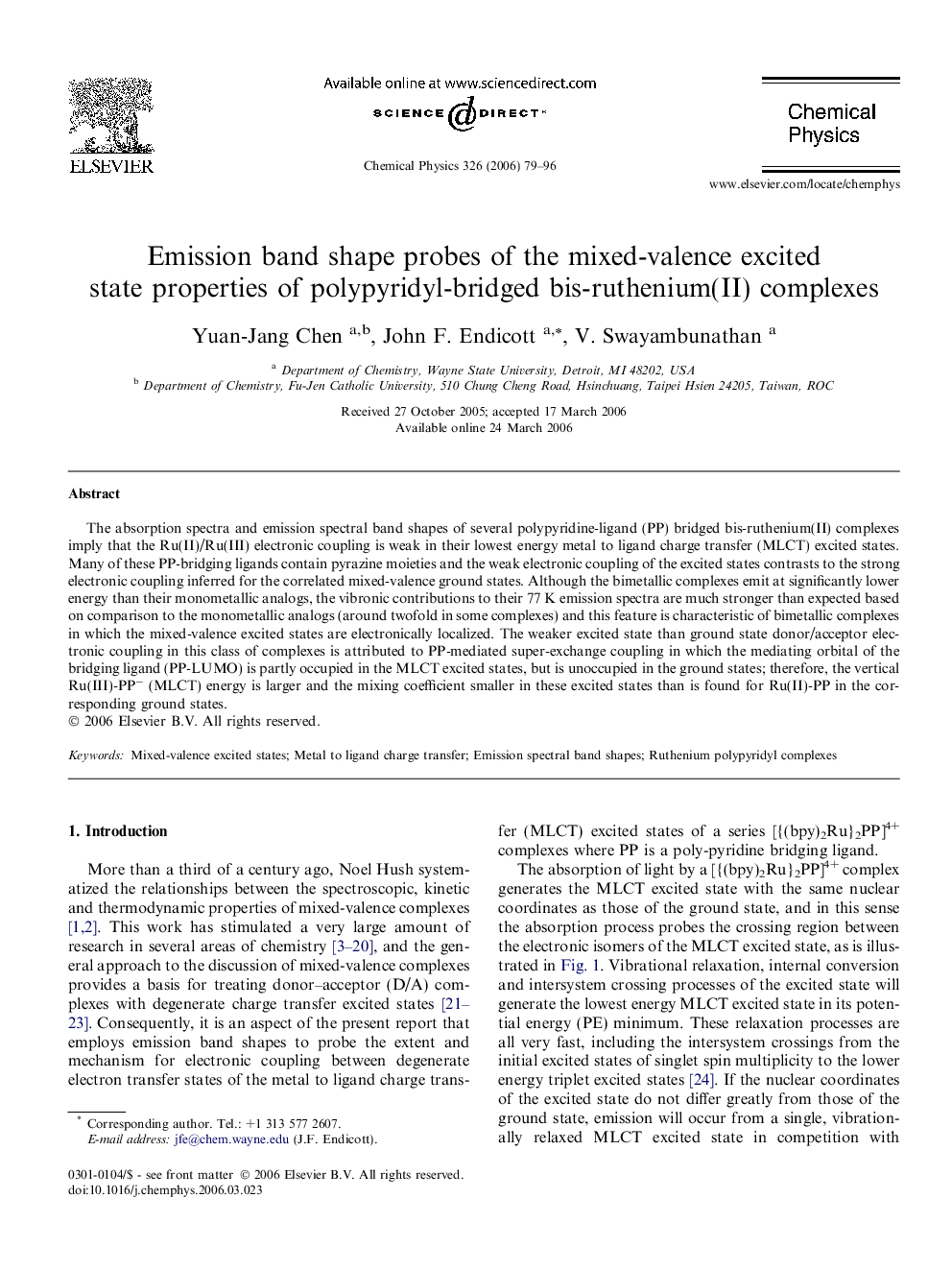| Article ID | Journal | Published Year | Pages | File Type |
|---|---|---|---|---|
| 5376944 | Chemical Physics | 2006 | 18 Pages |
Abstract
The absorption spectra and emission spectral band shapes of several polypyridine-ligand (PP) bridged bis-ruthenium(II) complexes imply that the Ru(II)/Ru(III) electronic coupling is weak in their lowest energy metal to ligand charge transfer (MLCT) excited states. Many of these PP-bridging ligands contain pyrazine moieties and the weak electronic coupling of the excited states contrasts to the strong electronic coupling inferred for the correlated mixed-valence ground states. Although the bimetallic complexes emit at significantly lower energy than their monometallic analogs, the vibronic contributions to their 77Â K emission spectra are much stronger than expected based on comparison to the monometallic analogs (around twofold in some complexes) and this feature is characteristic of bimetallic complexes in which the mixed-valence excited states are electronically localized. The weaker excited state than ground state donor/acceptor electronic coupling in this class of complexes is attributed to PP-mediated super-exchange coupling in which the mediating orbital of the bridging ligand (PP-LUMO) is partly occupied in the MLCT excited states, but is unoccupied in the ground states; therefore, the vertical Ru(III)-PPâ (MLCT) energy is larger and the mixing coefficient smaller in these excited states than is found for Ru(II)-PP in the corresponding ground states.
Related Topics
Physical Sciences and Engineering
Chemistry
Physical and Theoretical Chemistry
Authors
Yuan-Jang Chen, John F. Endicott, V. Swayambunathan,
